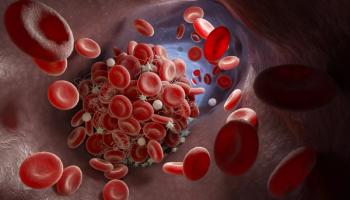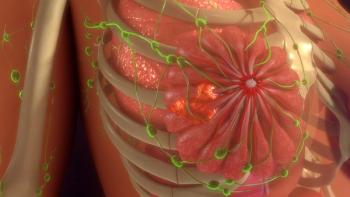
Oncotype DX predicts recurrence with aromatase inhibitor treatment
A brief summarizing significant news from this year's San Antonio Breast Cancer Symposium regarding the TransATAC study's results showing that Oncotype DX may now be available for use in women who have taken aromatase inhibitors.
Researchers presenting the TransATAC study at SABCS Saturday morning showed results for the first time that Oncotype DX, a test to predict recurrence and benefit from chemotherapy, could be used in women who had taken aromatase inhibitors. It also marked the largest study of the genetic assay to date.
Oncotype DX is a genetic test that measures the expression of 16 genes in breast cancer cells along with five reference genes. The assay is approved for women with early-stage estrogen receptor-positive disease. The test results give a score up to 100, which provides an accurate predictor of recurrence risk and a tumor’s response to chemotherapy. Patients with a high recurrence score (over 30) are more likely to benefit from chemotherapy than those with a low score (below 18) or intermediate score (between 18-30).
However, the test has only been clinically validated in women who have received tamoxifen for adjuvant therapy (treatment after surgery). With more and more studies showing aromatase inhibitors are more effective at preventing recurrence, the TransATAC trial aimed to show if the Oncotype DX Recurrence Score (RS) could accurately predict recurrence after nine years in this more contemporary patient group—women with hormone-positive cancer taking Arimidex (anastrozole) instead of tamoxifen.
Researchers examined tumor samples from 1231 patients who were enrolled in the nearly 10,000-patient ATAC trial, which examined whether five years of tamoxifen, Arimidex, both, or nothing was better. For the current study, researchers only examined the tamoxifen and Arimidex single-agent arms.
Clinical models usually take into account tumor grade and size when determining if a woman is a good candidate for adjuvant therapy. A new computational program, called Adjuvant! Online, provides physicians with further information to predict recurrence risk. And the addition of the Oncotype DX RS gives them one more piece of information to help make the best treatment decision.
The TransATAC study looked at nine-year recurrence risk in women with either node-negative and node-positive disease. Patients in the node-negative group with a low RS had a four percent distant recurrence rate compared with 12 percent in the intermediate group and 25 percent in the high-risk group. In the node-positive group, the distant recurrence rate was 17 percent, 28 percent, and 49 percent, respectively. This is the first time a study showed that the Oncotype DX RS independently predicts distant recurrence, in both node-negative and node-positive cancers, in patients taking either Arimidex or tamoxifen.
When compared with the results from Adjuvant! Online, Oncotype DX predicted the risk of distant recurrence more accurately, perhaps setting the stage for physicians to use both tests to better determine treatment options for this group of women. It also confirms previous findings that Arimidex lowers risk of distant recurrence better than tamoxifen.
For more information on Oncotype DX and Adjuvant! Online, read “Finding Your Compass,” in the
Read more of CURE's coverage of the 31st annual San Antonio Breast Cancer Symposium at





